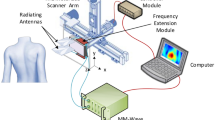Abstract
In a recent study, we have demonstrated that real-time Raman spectroscopy could be used for skin cancer diagnosis. As a translational study, the objective of this study is to validate previous findings through a completely independent clinical test. In total, 645 confirmed cases were included in the analysis, including a cohort of 518 cases from a previous study, and an independent cohort of 127 new cases. Multi-variant statistical data analyses including principal component with general discriminant analysis (PC-GDA) and partial least squares (PLS) were used separately for lesion classification, which generated similar results. When the previous cohort (n = 518) was used as training and the new cohort (n = 127) was used as testing, the area under the receiver operating characteristic curve (ROC AUC) was found to be 0.889 (95 % CI 0.834–0.944; PLS); when the two cohorts were combined, the ROC AUC was 0.894 (95 % CI 0.870–0.918; PLS) with the narrowest confidence intervals. Both analyses were comparable to the previous findings, where the ROC AUC was 0.896 (95 % CI 0.846–0.946; PLS). The independent study validates that real-time Raman spectroscopy could be used for automatic in vivo skin cancer diagnosis with good accuracy.


Similar content being viewed by others
References
MacKenzie-Wood AR, Milton GW, Launey JW (1998) Melanoma: accuracy of clinical diagnosis. Australas J Dermatol 39:31–33
Miller M, Ackerman AB (1992) How accurate are dermatologists in the diagnosis of melanoma? Degree of accuracy and implications. Arch Dermatol 128:559–560
Morton C, Mackie R (1998) Clinical accuracy of the diagnosis of cutaneous malignant melanoma. Br J Dermatol 138:283–287
Lui H, Zhao J, McLean D, Zeng H (2012) Real-time Raman spectroscopy for in vivo skin cancer diagnosis. Cancer Res 72:2491–500
Huang Z, Zeng H, Hamzavi I, McLean DI, Lui H (2001) Rapid near-infrared Raman spectroscopy system for real-time in vivo skin measurements. Opt Lett 26:1782–4
Zhao J, Lui H, McLean DI, Zeng H (2008) Integrated real-time Raman system for clinical in vivo skin analysis. Skin Res Technol 14:484–92
Gniadecka M, Philipsen PA, Sigurdsson S, Wessel S, Nielsen OF, Christensen DH, Hercogova J, Rossen K, Thomsen HK, Gniadecki R, Hansen LK, Wulf HC (2004) Melanoma diagnosis by Raman spectroscopy and neural networks: structure alterations in proteins and lipids in intact cancer tissue. J Invest Dermatol 122:443–449
Lieber CA, Majumder SK, Ellis DL, Billheimer D, Mahadevan-Jansen A (2008) In vivo nonmelanoma skin cancer diagnosis using Raman microspectroscopy. Lasers Surg Med 40:461–467
Nijssen A, Maquelin K, Santos LF, Caspers PJ, Bakker Schut TC, den Hollander JC, Neumann MHA, Puppels GJ (2007) Discriminating basal cell carcinoma from perilesional skin using high wave-number Raman spectroscopy. J Biomed Opt 12:034004
Wang S, Zhao J, Lui H, He Q, Bai J, Zeng H (2014) Monte Carlo simulation of in vivo Raman spectral measurements of human skin with a multi-layered tissue optical model. J Biophotonics 7:703–712
Zhao J, Lui H, McLean DI, Zeng H (2007) Automated autofluorescence background subtraction algorithm for biomedical Raman spectroscopy. Appl Spectrosc 61:1225–32
Acknowledgments
The project was supported in part by the Canadian Cancer Society, the Proof of Principle II grant co-funded by the Canadian Institutes of Health Research and Verisante Technology Inc., the Canadian Dermatology Foundation, the VGH & UBC Hospital Foundation, and the BC Hydro Employees Community Service Fund. Dr. David McLean, Wei Zhang, Mohammed AlJasser, and Soodabeh Zandi were acknowledged for consultation, recruiting patient, and clinical measurement.
Conflict of interest
J. Zhao, H. Lui, H. Zeng, and the British Columbia Cancer Agency hold Raman spectroscopy patents that are licensed to Verisante Technology Inc.
Author information
Authors and Affiliations
Corresponding author
Additional information
Published in the topical collection Raman4Clinics with guest editors Jürgen Popp and Christoph Krafft.
Rights and permissions
About this article
Cite this article
Zhao, J., Lui, H., Kalia, S. et al. Real-time Raman spectroscopy for automatic in vivo skin cancer detection: an independent validation. Anal Bioanal Chem 407, 8373–8379 (2015). https://doi.org/10.1007/s00216-015-8914-9
Received:
Revised:
Accepted:
Published:
Issue Date:
DOI: https://doi.org/10.1007/s00216-015-8914-9




